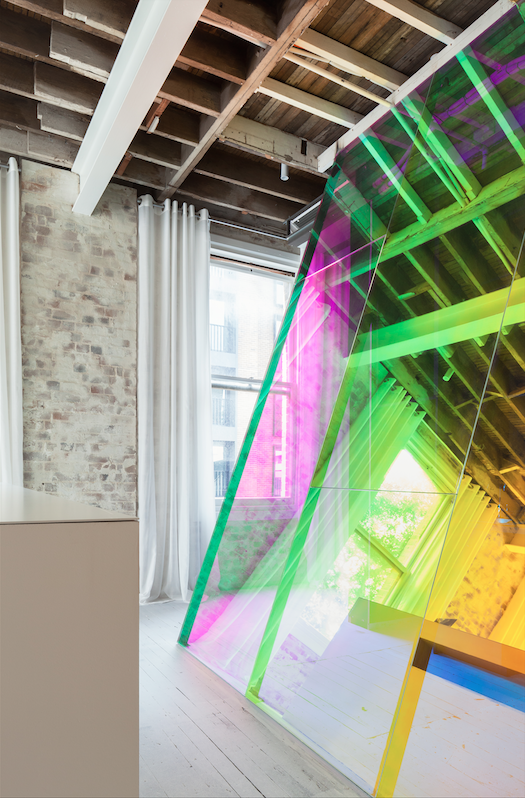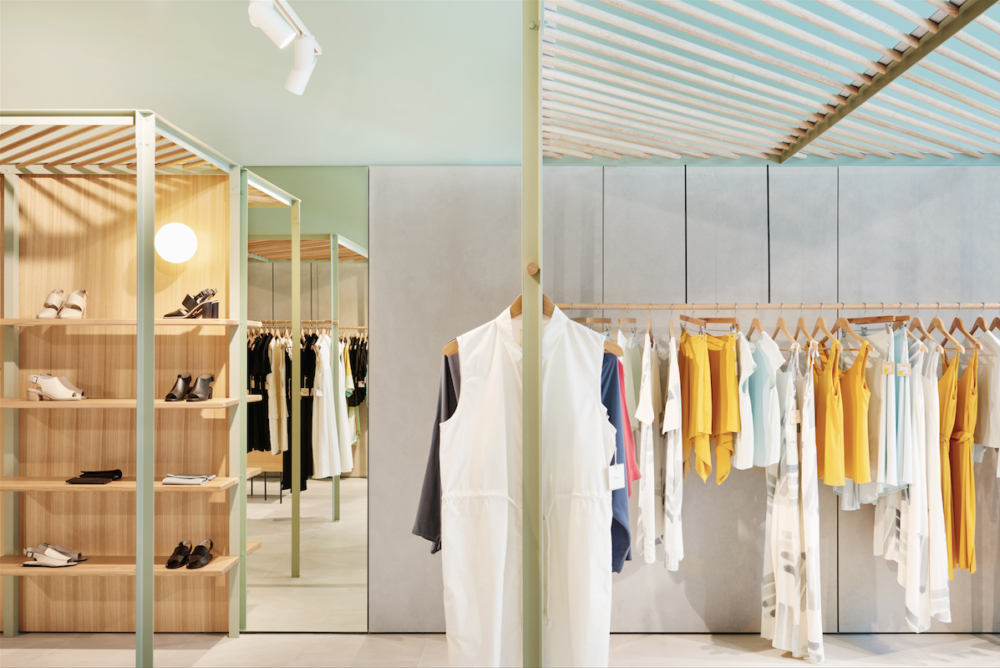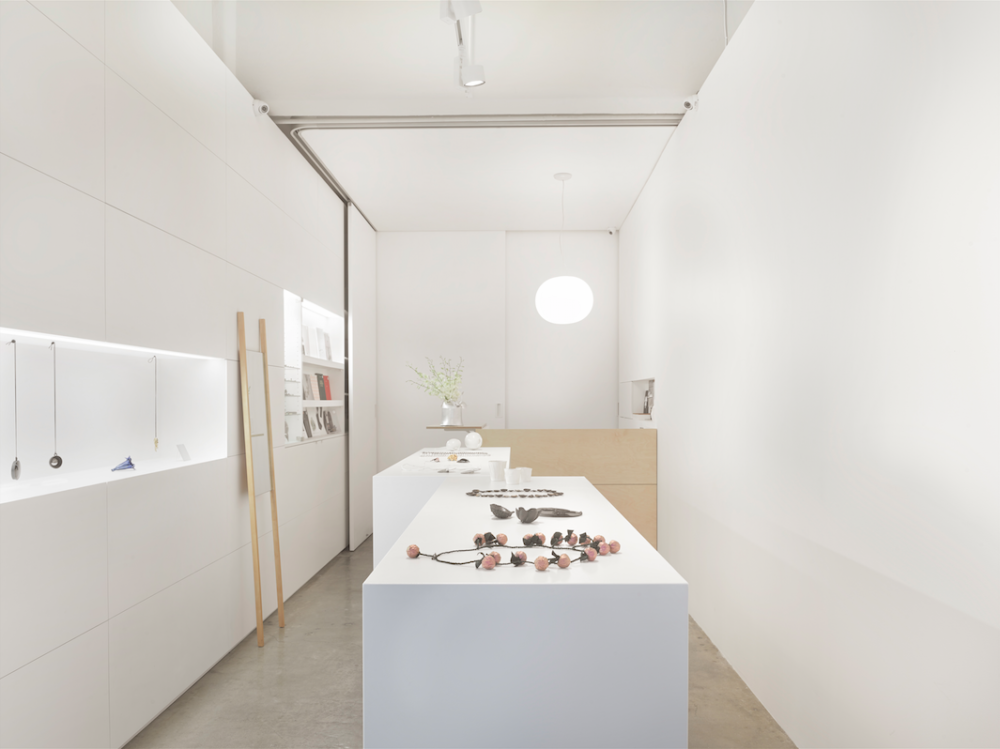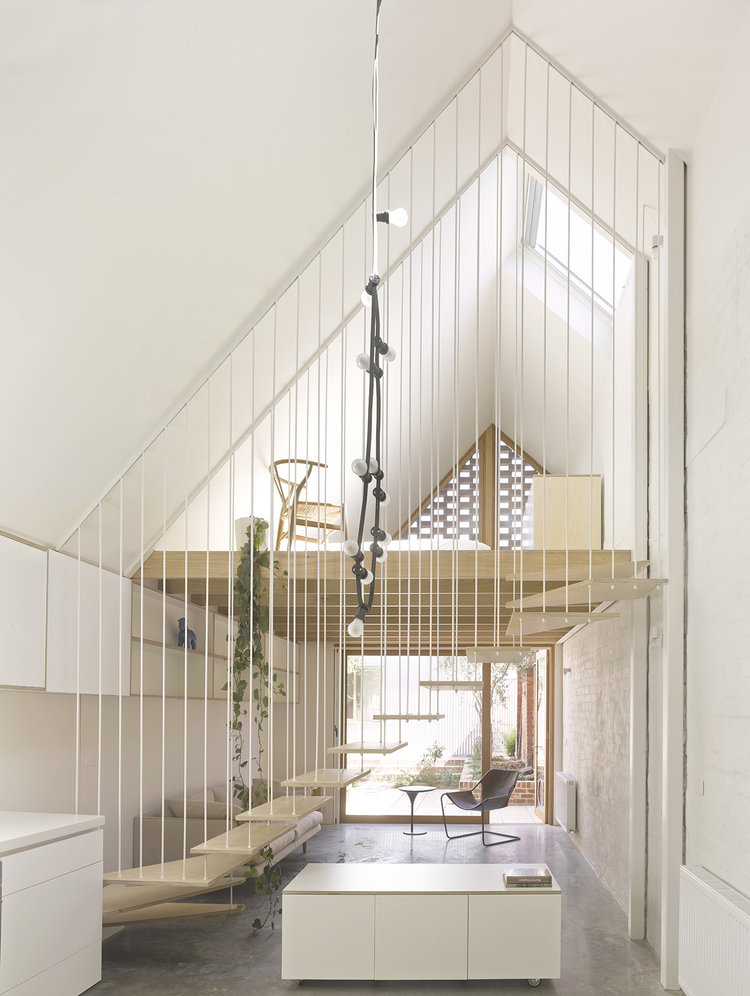
From Switzerland to Australia: Karen Abernethy
Share
“Abernethy brings a unique perspective to our architecture community. She has been making beautiful, resolved work in Australia from her home base in Lugano, Switzerland for the last 10 years. She has to be more than just a clever designer to deliver this quality result; collaboration and negotiation are no doubt her strengths. It will be interesting to watch what more she can bring from her time in international residence.”
– RACHEL NOLAN, principal Kennedy Nolan
Mezzanine: You work both in Australia and in Switzerland – what international perspective does this bring to your work?
Karen Abernethy: Working between two countries and cultures allows me to be objective when responding to a brief as I continually see the context of a project from varying points of view. I also feel quite free from the local design trends in both places because I am never completely immersed in one or the other.
While Switzerland is extremely precise and rigorous, especially in detail and construction, Australia is more open-minded and fresh. I like to think that my design practice is influenced by all of these qualities, giving my work a point of difference.

Humming Puppy yoga studio in Sydney, by Abernethy in collaboration with Louisa Macleod. Photo by Katherine Lu.
Working abroad would require effective collaboration; can you share your insights into the best ways you’ve found this to work?
The most effective way I have found to carry out projects at a distance is to collaborate closely with a select group of friends/ colleagues who are at a similar stage in their careers and with similar creative and professional visions.
By collaborating equally with others, rather than employing them, there is a shared sense of responsibility and ownership, so you can be sure projects are always well cared for. The collaboration also makes the creative process richer, and the outcomes more interesting.
It is necessary for my practice to keep the volume and pace of work manageable, as things could quite easily get out of control given I am not always on the ground. While this limits the quantity of projects I can work on at any one time, it also allows focus and rigour.
In both Melbourne and Lugano, I share studios with other creatives, so although day-to-day I mostly work on my own, I make sure to always be immersed in inspiring and vibrant environments.
I travel between Switzerland and Australia at least three times per year, and ensure that I am always present at critical moments. The contrast between Australia, where work is more fast paced and decisions often need to be made quickly, and Switzerland, where I can really spend time focusing on design and detail, is fundamental to the success of the projects.

Búl store at Pacific Fair, Gold Coast, by Abernethy in collaboration with Mike Macleod. Photo by Dan Hocking.
How do you approach process? Have you developed a methodology for responding to client briefs?
The briefing and early design stage is always intertwined in our projects. A client can provide a detailed brief, but usually it is not until they can see their brief interpreted on paper that the scope of a project can be properly defined. Unexpected and often essential additions and changes to the brief often come to light in the early design stages that have not been considered by the client yet.
This is the role of the designer: to bring to light the unexpected and to create opportunities from brief and context for inspiring and beautiful design solutions.
We present simple, conceptual design ideas to a client very early on in the design process through a stage we call ‘design direction’. It establishes a clear path (and budget) from the outset, enabling trust and excitement and ensuring the client feels a sense of control of the project from the beginning.
Once trust and design direction have been established, other aspects of the brief can be addressed, such as the detailed functional qualities of the project, construction methods and details, and materials and fittings.

Gallery Funaki, Melbourne by Abernethy. Photo by Scottie Cameron.
You work across a scale of projects – from residential extensions to commercial projects. Can you talk through each typology and what you’ve learned along the way?
I really enjoy the diversity of working on both residential and commercial projects.
Residential projects require a greater sensitivity to the personal needs of the clients, and more patience, as they make decisions about their home, which are usually long-term choices that can fundamentally impact their way of life. I believe it is imperative to build flexibility, and thus sustainability, into residential design as a family’s needs continually change and grow over time.
With commercial projects, there is often less contact between the architect and end users, so the vision and ideas are ‘bigger picture’ and more strategic, but still require the same extent of insight and innovation in design.
In all typologies, an open, honest and trusting architect/client relationship needs be established and maintained.

Jewel house by Abernethy. Photo by Scottie Cameron.
What advice do you have for people looking to engage an architect – whether it be for their home or a business project? What has been the best brief you’ve received?
Engage an architect whose previous work and/or philosophy correspond with the ambitions of your project.
You also need to have a sense that you can get along well with your architect and are going to enjoy working them. There are some stages in the process of a project when you are in contact daily, so good communication is imperative and trust is absolutely essential. Our best clients have become our friends!
Try not to be too prescriptive initially about the aesthetic aspects of the project. The best briefs I have received are those that clearly identify the practical requirements of a project but leave space for the creative process of design.
Karen Abernethy was nominated by Rachel Nolan for MEZZANINE‘s Top 20 under 40, which was published in issue #7. Subscribe to MEZZANINE at shop.niche.com.au or digitally through Zinio.
—
See another of MEZZANINE’s 20 under 40 – Henry Wilson, here.
You Might also Like
























